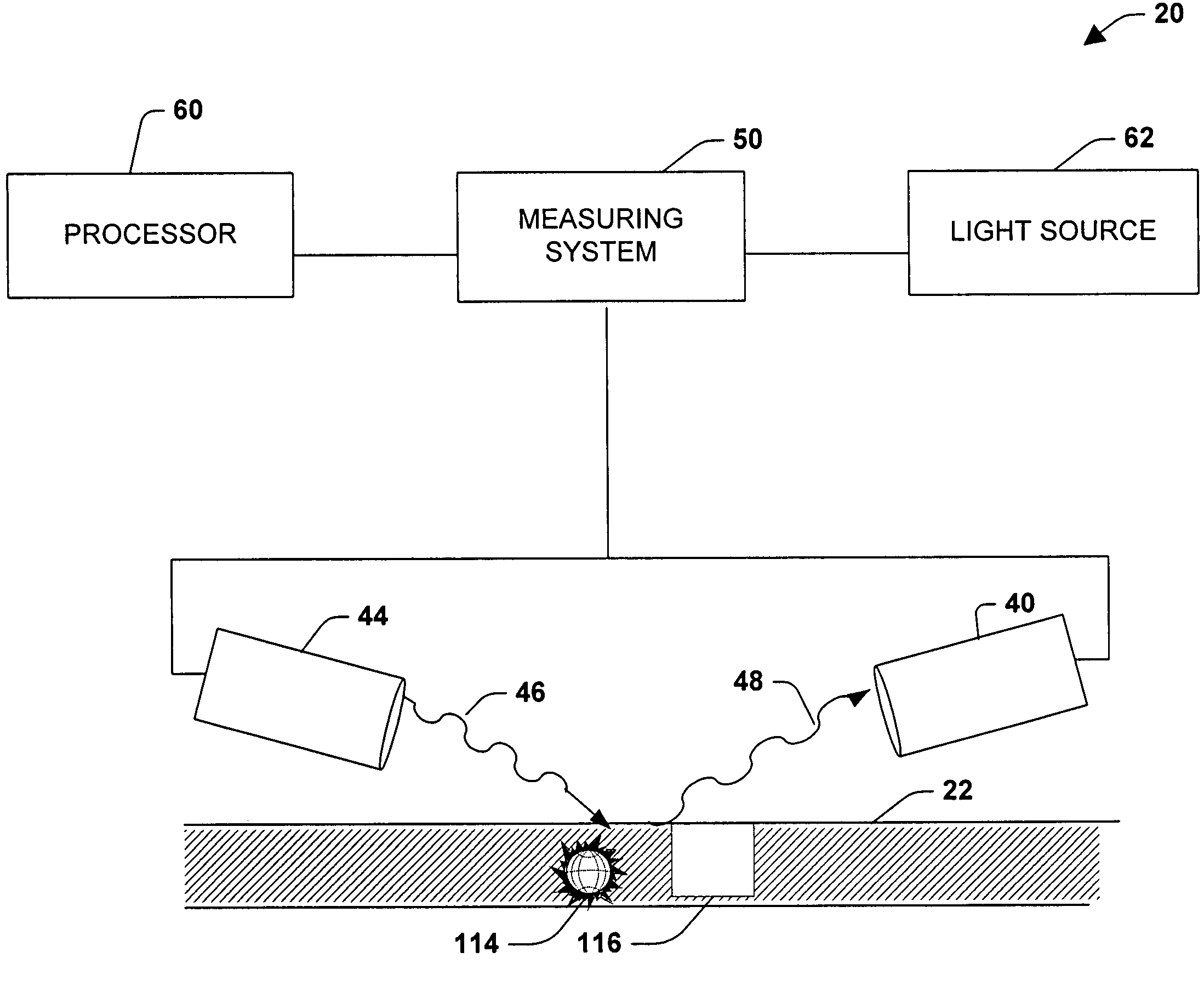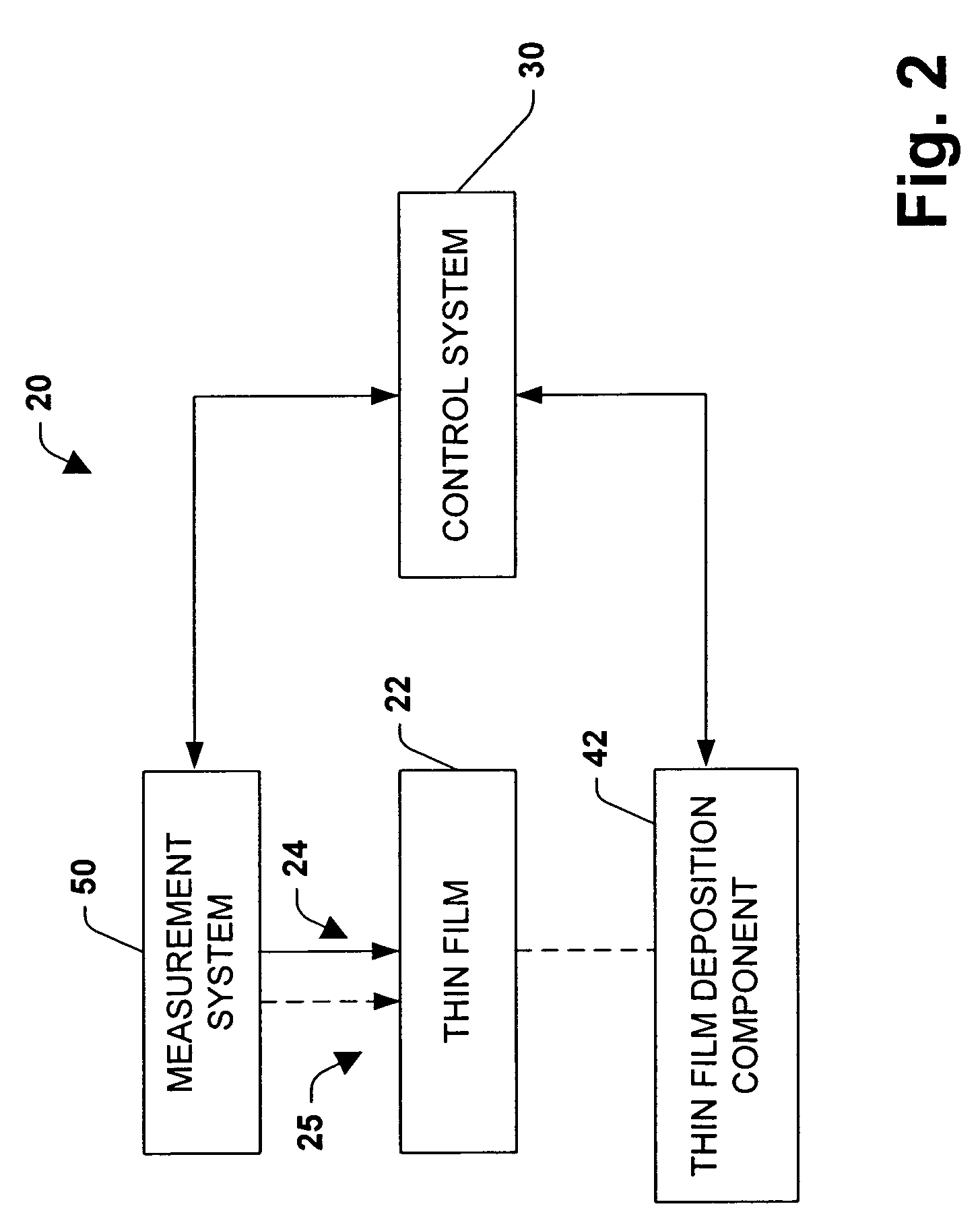Scatterometry and acoustic based active control of thin film deposition process
- Summary
- Abstract
- Description
- Claims
- Application Information
AI Technical Summary
Benefits of technology
Problems solved by technology
Method used
Image
Examples
Embodiment Construction
[0041]The present invention will now be described with reference to the drawings, wherein like reference numerals are used to refer to like elements throughout. The following detailed description is of the best modes presently contemplated by the inventors for practicing the invention. It should be understood that the description of these aspects are merely illustrative and that they should not be taken in a limiting sense.
[0042]Referring initially to FIG. 1, two types of exemplary deposited thin films are shown. FIG. 1 shows a thin film 100, having substantially no imperfections, being subjected to a scatterometry based monitoring system. The monitoring system will be described in greater detail later. One or more beams of light 102 are directed at the thin film 100 and are reflected off the thin film as reflected light 104. Relationships including, but not limited to, an angle of incidence of the light 102 with the thin film 100, an angle of reflection of the reflected waves 104 a...
PUM
 Login to View More
Login to View More Abstract
Description
Claims
Application Information
 Login to View More
Login to View More - R&D
- Intellectual Property
- Life Sciences
- Materials
- Tech Scout
- Unparalleled Data Quality
- Higher Quality Content
- 60% Fewer Hallucinations
Browse by: Latest US Patents, China's latest patents, Technical Efficacy Thesaurus, Application Domain, Technology Topic, Popular Technical Reports.
© 2025 PatSnap. All rights reserved.Legal|Privacy policy|Modern Slavery Act Transparency Statement|Sitemap|About US| Contact US: help@patsnap.com



